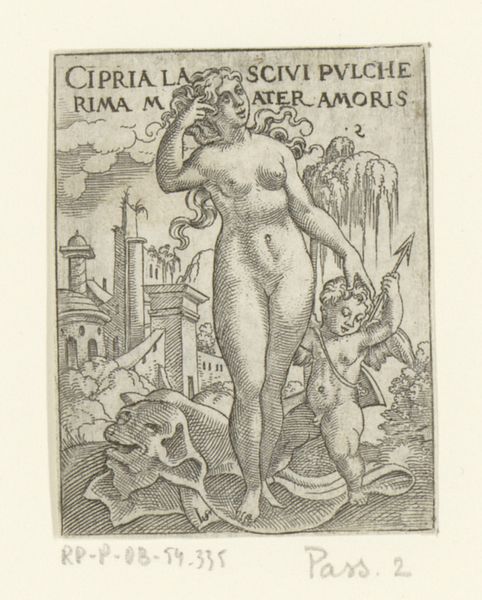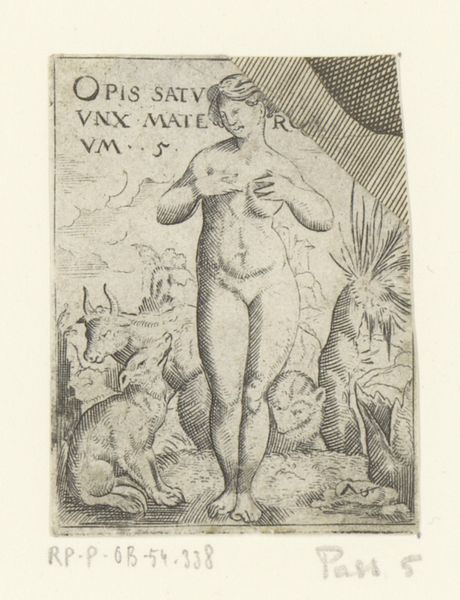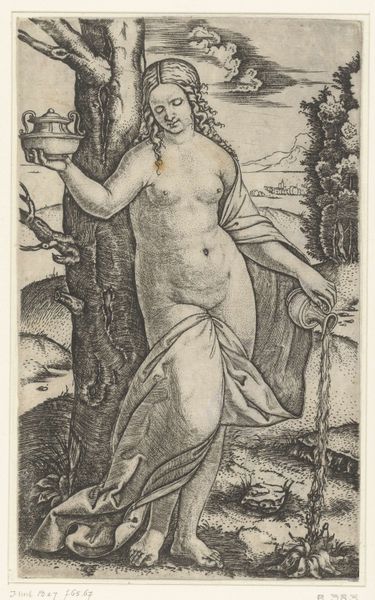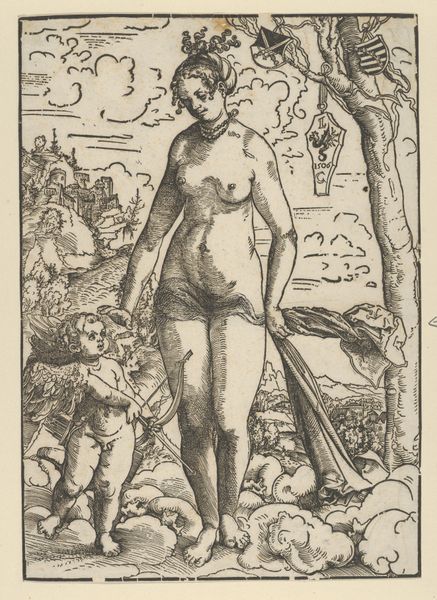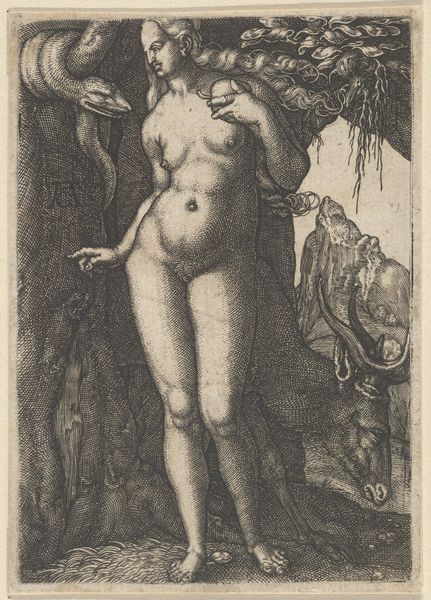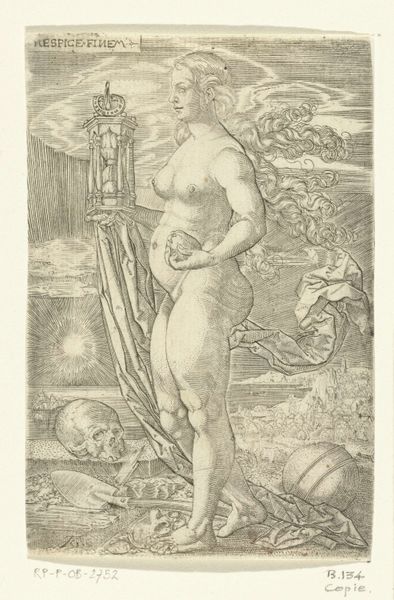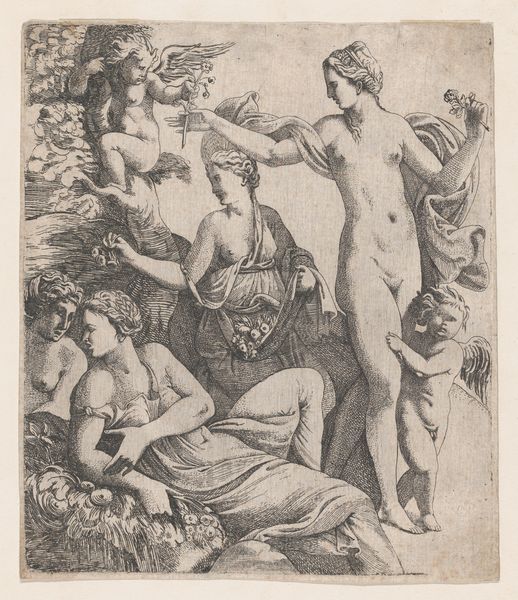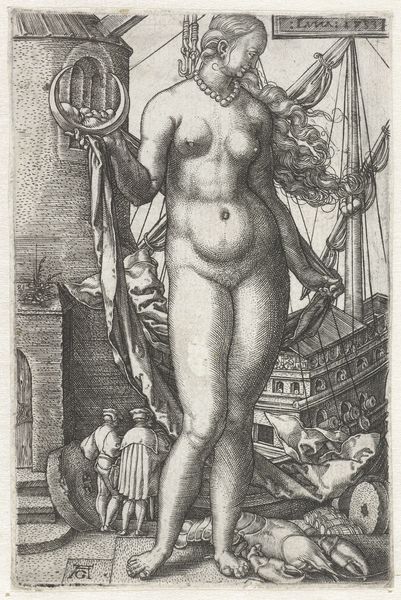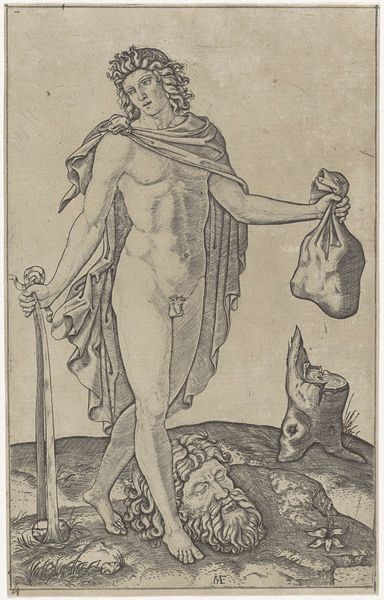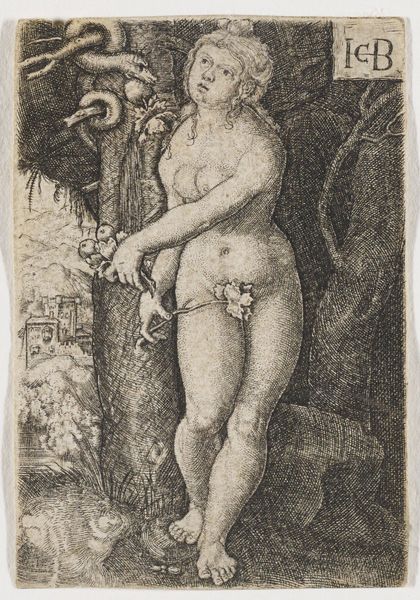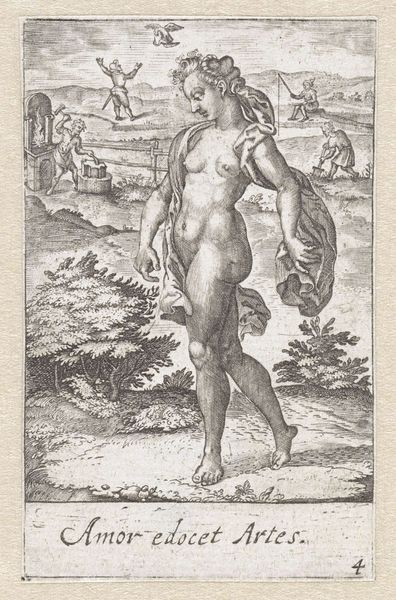
print, engraving
old engraving style
figuration
11_renaissance
history-painting
nude
engraving
Dimensions: height 57 mm, width 44 mm
Copyright: Rijks Museum: Open Domain
Curator: This print, titled "Ariadne," was created by Nikolaus Solis between 1552 and 1584. It is an engraving, showcasing his skill in this medium. Editor: Immediately, the sharp lines of the engraving, juxtaposed with the softness implied in Ariadne’s form, catch my eye. There's a stillness, an almost melancholic tone despite the nudity. Curator: The choice of engraving is quite telling. The precision afforded by the technique allowed Solis to disseminate this classical figure more widely and in multiple copies, fitting the Renaissance drive for accessible knowledge and beauty through mass production. Editor: Mass production shouldn’t overshadow Solis' deliberate artistic choices. Look at the textural variations: the smooth skin of Ariadne compared to the patterned landscapes or the structured obelisk. The figure takes precedence by its formal treatment and idealization, right? Curator: I think we need to acknowledge that the circulation of these prints facilitated a particular vision, potentially commercial, showcasing classical ideals linked to beauty standards available to those who could afford them. How many hands worked to get the engraving created and how the distribution process functioned within that system is crucial, wouldn’t you agree? Editor: True, but ignoring the iconographic complexity is limiting. The narrative implied by Ariadne, the abandoned bride, resonates visually through the composition. Note the way the architectural backdrop dwarfs her, hinting at her predicament of loneliness and despair. Curator: It's not just despair, but consider who consumed images like these. Powerful merchant families probably wanted to allude to the classical knowledge they obtained; they aimed to advertise their status and wealth. Her body also becomes another commodity, consumed by the male gaze within this network. Editor: Fair enough. Viewing the work as simply aesthetic enjoyment risks overlooking its societal role within production networks, or its historical context of how beauty or wealth can influence visual representation. Curator: Exactly, so focusing on Solis's role as the artist allows also examining the economic forces affecting labor. This work acts as a historical artifact, linking back to societal values and consumerism, wouldn’t you agree? Editor: Ultimately, we see an integration of artistic intention, social distribution and class, captured with great nuance through these sharp engraved lines. Curator: Agreed, these layers encourage us to examine past values in ways we might overlook if simply gazing at the print as an aesthetic piece removed from time and class structures.
Comments
No comments
Be the first to comment and join the conversation on the ultimate creative platform.
